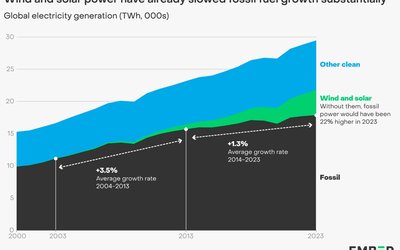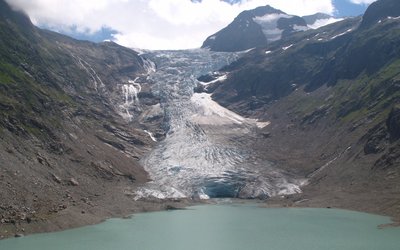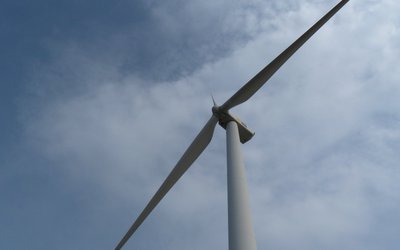
Lots of airco units in a row, a common picture for Europe's future? (photo: Russel Street, www.flickr.com)
How energy demand for heating and cooling is estimated
The indicator ‘Heating Degree Days’ is a measure that reflects the amount of energy needed, for a given day or period, to heat the internal environment in a cold climate to a specified base temperature. Likewise, the indicator ‘Cooling Degree Days’ reflects the amount of energy needed to cool the internal environment in a hot climate to a specified base temperature. It is to be expected that due to global warming the indicator ‘Heating Degree Days’ will decrease across Europe while the indicator ‘Cooling Degree Days’ will increase. It depends on the combination of the two whether less or more energy will be needed to keep our houses, offices and factories at a pleasant temperature all year round.
For Europe the likely evolution of these indicators until the end of the 21st century was investigated for an intermediate and high-end scenario of climate change, aimed at providing information on future climate impacts on European energy markets. Base temperature values were chosen of 15.5°C for ‘Heating Degree Days’ and 22°C for ‘Cooling Degree Days’. Thus, days with temperatures below 15.5°C were included to estimate changes in energy needed for heating, and days with temperatures above 22°C to estimate changes in energy needed for cooling. The annual values of the indicator ‘Heating Degree Days’ were computed as the cumulated sum of daily ‘Heating Degree Days’ for the winter season (October – March). Likewise, this was done for the ‘Cooling Degree Days’ during the summer season (April – September).
Less heating in the North, more cooling in the South
In general, the indicator ‘Heating Degree Days’ is projected to decrease over Europe, and most pronounced under the high-end scenario of climate change and over Scandinavia and Russia. Conversely, the indicator ‘Cooling Degree Days’ is projected to increase, especially over the Mediterranean region and the Balkans. The current values of ‘Cooling Degree Days’ for southern Italy and Greece could become normal for central France and Hungary by the end of the 21st century. Moreover, during the last decades of the century, the use of cooling systems in mid-summer could be adopted in regions where it is currently unusual, such as southern Scandinavia and the Baltic countries.
Net impact on Europe’s energy demand depends on population growth
The impact of these changes on energy demand depends on the population density across Europe. After all, a strong decrease of ‘Heating Degree Days’ in sparsely populated parts of northern Europe may not have a large impact on Europe’s energy demand. A strong increase of ‘Cooling Degree Days’ in the densely populated Mediterranean Region, however, may be far more important for Europe’s future energy demand.
If population would remain constant towards 2100, the combined effect of these changes would be a gradual decrease of energy demand over Europe. The indicator ‘Heating Degree Days’ will progressively decrease during the 21st century and this decrease will outweigh the projected increase of the indicator ‘Cooling Degree Days’ under both scenarios of climate change and for all countries. A net energy saving would be the result.
However, the situation is different if projections of future population growth and decline over the 21st century are included in the calculations. Then, despite the persisting warming, energy demand is projected to increase over northern Europe, the Baltic countries, Great Britain, Ireland, Benelux, the Alps, Spain, and Cyprus, resulting in an overall increase of energy demand over Europe.
Source: Spinoni et al., 2017. International Journal of Climatology








